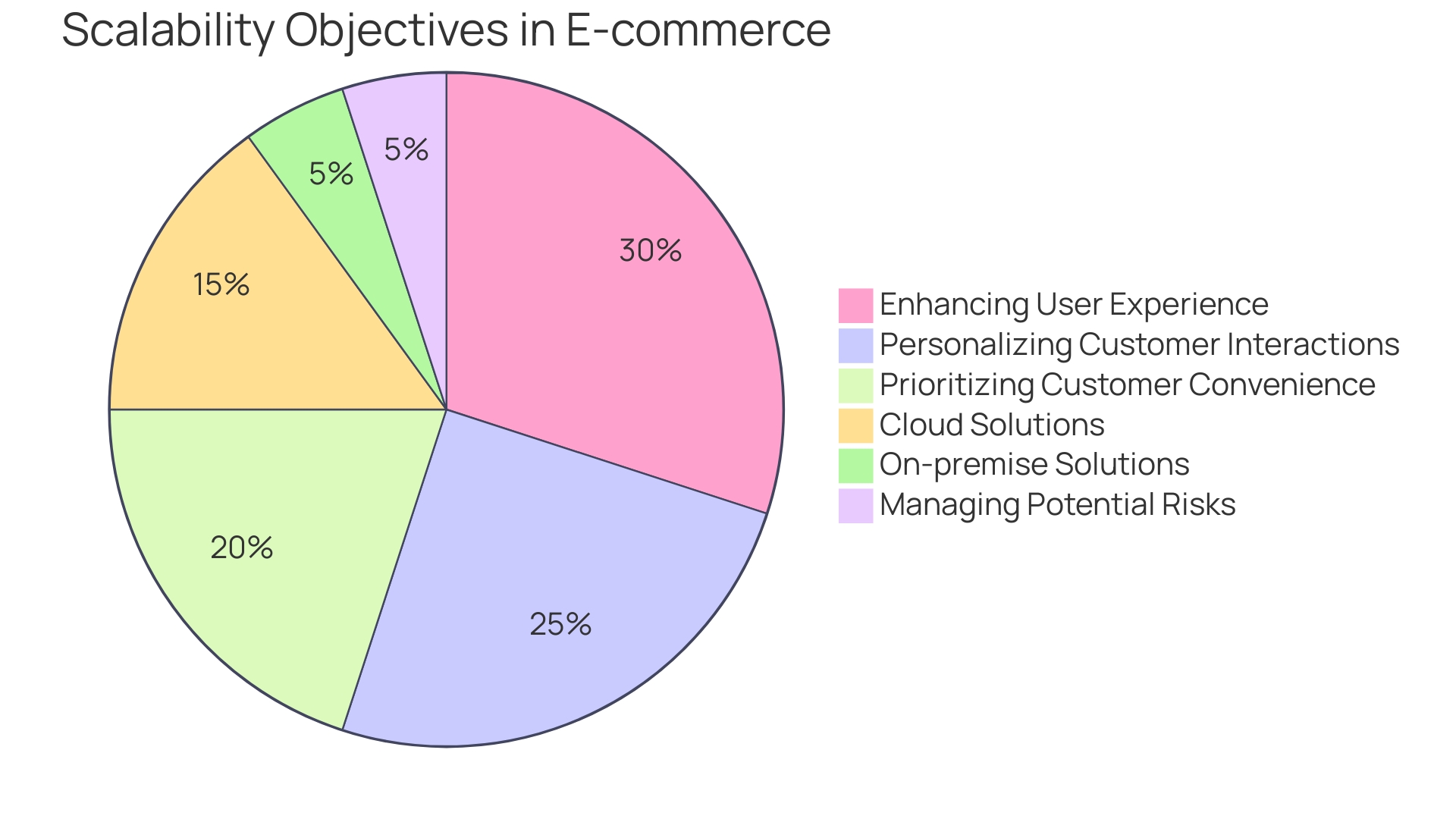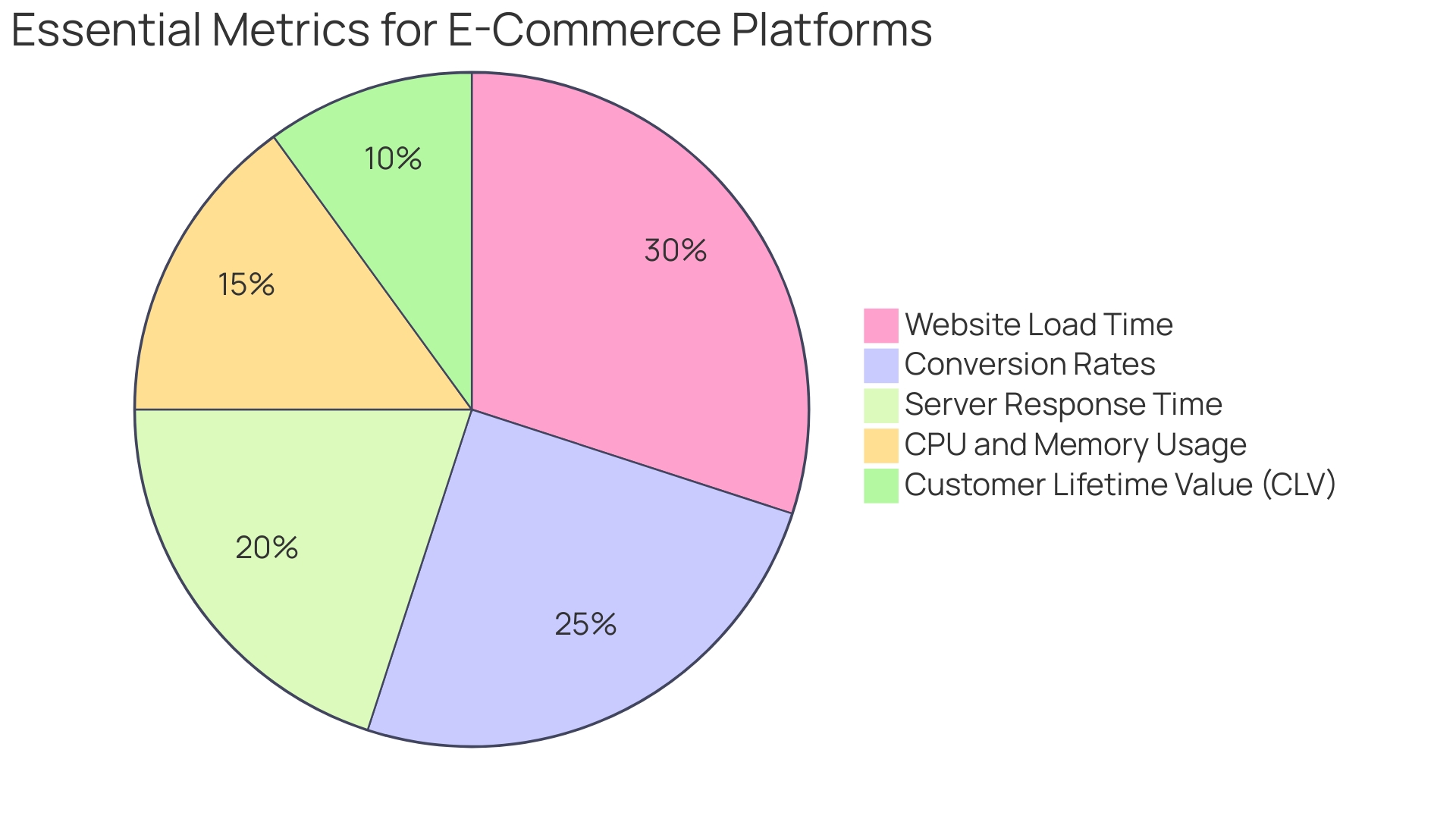Introduction
Scalability is a crucial factor for the success and growth of e-commerce businesses in today's digital marketplace. In order to keep up with the ever-changing landscape and fierce competition, companies must adapt by choosing scalable platforms and infrastructure that can expand with their ambitions.
This article delves into the importance of scalability, defining goals and expectations, monitoring key metrics, leveraging cloud computing, building scalable web applications, and adopting a microservices architecture. By understanding these key aspects, businesses can position themselves for long-term success and remain competitive in the rapidly evolving e-commerce industry.
Understanding the Importance of Scalability
For e-commerce businesses, scalability is not just a technical requirement; it's the backbone of sustainable growth and market competitiveness. As the digital marketplace burgeons, businesses must adapt by choosing platforms and infrastructure that can expand with their ambitions.
The journey of Boots UK, in collaboration with IBM Consulting, exemplifies the transformational power of scalable solutions. Faced with a surge in online activity and a pandemic-induced impossibility of face-to-face collaboration, Boots and IBM shifted to virtual teamwork and embraced the IBM Garage Methodology.
The agile approach to design, build, and scale not only stabilized their platform amid unprecedented user growth but also allowed them to transition to an advanced IBM Cloud environment, effectively future-proofing their operations. In the face of relentless competition, where market niches are outpaced by rivals, a scalable e-commerce strategy is vital.
Statistics reveal a stark digital divide: from 2020 to 2022, investment in digital solutions by micro firms jumped from 10% to 20%, while large firms saw a tripling from 20% to 60%. East Asia leads the charge, with a quadruple increase in digital solution investments.
Yet, digital services growth remains lopsided, with six economies dominating 70% of the IT services sector's global value added. This underscores the urgency for businesses to scale up or risk obsolescence. Embracing scalability means being prepared for 'what's next.' It's a strategic move that addresses the scale of both people and infrastructure, as every firm must continuously evolve to meet new economic realities. Amazon's journey, marked by decentralization to achieve rapid delivery, illustrates the complexity of scaling operations. The pursuit of scalability is a pursuit of excellence, and with it comes the challenge of maintaining efficiency—a balance that is crucial for any e-commerce entity aiming to surpass the 'Centaur' milestone of $100 million in revenue.

Defining Goals and Expectations for Scalability
Clarifying your scalability objectives is crucial in the dynamic e-commerce landscape. With retail e-commerce sales projected to reach 7.4 trillion dollars by 2025, businesses must leverage data science to intuitively understand consumer behavior and preferences. Scalability isn't just about handling increased traffic; it's about enhancing user experience (UX) and personalizing customer interactions based on actionable insights derived from data.
For instance, using machine learning algorithms, Wayfair analyzes product attributes from a vast catalog to deliver the most relevant search results, like a "modern yellow sofa," enhancing UX and customer satisfaction. Moreover, the emergence of 'phygital'—a blend of physical and digital channels—underscores the need for omnipresent brand strategies that prioritize customer convenience. Entrepreneurial success stories, such as Mohammed Imran's Limraz Furniture, which saw 700 orders on the first day on Flipkart, exemplify the potential of scalable e-commerce solutions in fostering rapid business growth.
As you define your scalability goals, consider the management aspects, such as cloud versus on-premise solutions, and the implications of a single point of failure. The costs associated with scaling up should be weighed against the risk of platform unavailability, especially during peak traffic events like Black Friday sales. Remember, every scaling decision impacts both infrastructure and customer relations, and as such, must be approached with a strategic mindset informed by both economic signals and consumer data.

Monitoring Key Metrics for Scalability
The e-commerce landscape is rapidly expanding, with sales projected to reach approximately 7.4 trillion dollars by 2025. In this highly competitive space, the agility to scale your platform is paramount.
Essential metrics such as website load time, server response time, and conversion rates are the indicators of your platform's scalability and customer satisfaction. Leveraging data science, you can extract actionable insights from these metrics to refine your e-commerce strategy.
For instance, applying an RFM scoring model to customer data can reveal patterns in purchasing habits, guiding targeted marketing efforts for improved conversion rates. Furthermore, considering the recent plateau in user growth for new market entrants like Temu, despite a sharp initial increase, it's evident that continuous optimization is necessary for sustaining growth.
Performance testing, including monitoring CPU and memory usage, becomes invaluable in ensuring your platform can handle an increasing number of users without compromising on performance. Additionally, error rates during testing can signal the need for stability improvements. Retailers also benefit from understanding the sources of their most valuable customers through customer lifetime value (CLV) modeling, allowing them to invest more effectively in high-ROI channels. By keeping a pulse on these critical metrics and adapting your strategies accordingly, you can ensure that your e-commerce platform not only meets the current demand but is also poised to handle future growth efficiently and reliably.

Leveraging Cloud Computing for Scalability
Cloud computing has revolutionized the way businesses approach scalability, offering a flexible and dynamic environment to manage fluctuating demands. With the cloud, companies can seamlessly allocate additional resources such as computing power, storage, and bandwidth.
This elasticity is invaluable during peak traffic periods, ensuring consistent performance without the constraints of traditional on-premises infrastructure. For instance, Chess.com, an online chess platform, experienced unprecedented traffic spikes following the COVID-19 lockdowns and cultural phenomena like 'The Queen's Gambit.'
By adopting a hybrid cloud model, the platform efficiently managed the surge in users and maintained service quality. Similarly, Bemol, a Brazilian retail giant, utilized cloud technology to overcome the logistical hurdles of serving remote Amazonian regions, offering reliable e-commerce services and free public WI-Fi to isolated communities.
Recent trends highlight the cloud's growing dominance, with personal cloud usage more than doubling since 2014, and 60% of corporate data stored in the cloud as of 2022. This shift is reflected in various sectors, including the DIY and Hardware Store market, emphasizing the cloud's role in modern commerce. However, the journey to the cloud must be navigated with caution, considering security and cost implications. Organizations that establish a robust cloud security framework can significantly reduce the financial impact of data breaches, saving on average over $700 million compared to those without proper planning. As cloud technology continues to evolve, it remains a cornerstone for businesses seeking agility, scalability, and competitive advantage in the digital marketplace.
Building Scalable Web Applications from Scratch
Crafting a scalable e-commerce solution involves intricate development processes and strategic planning. The technology stack you choose must be robust yet flexible, and your application architecture should be designed to support not just current demands but also future expansion. Key strategies include employing continuous integration and delivery practices to ensure that code changes are seamlessly integrated and deployed.
This is imperative for maintaining service health and addressing cross-cutting concerns within the software development lifecycle. Moreover, horizontal scaling—adding more machines to your resource pool—allows your application to handle increased traffic by spreading the load. Contrastingly, vertical scaling—enhancing the capacity of an existing machine—can also be a viable strategy, albeit with its limitations in terms of scalability.
Furthermore, the code structure must promote modularity and maintainability, which are essential for scalability. This includes making informed decisions about session state management, which is crucial for linking the user interface with server-side processes. According to recent statistics, the e-commerce industry is burgeoning, with internet active users in India alone expected to reach 900 million by 2025.
This growth trajectory is mirrored globally, emphasizing the need for e-commerce solutions that can scale in tandem with the expanding digital marketplace. However, with this growth comes the increased risk of cyberattacks, necessitating robust cybersecurity measures to protect sensitive data. In the context of cloud services, the debate around vertical separation of services highlights the importance of having access to a comprehensive set of tools for building quality software.
Limiting these services could stifle the potential of web applications, akin to removing essential pieces from a Lego set. Lastly, it is essential to recognize that building a scalable e-commerce application is not just about handling growth but managing it intelligently. With the right approach, your application can not only meet current needs but also adapt to future challenges, ensuring long-term success in the competitive e-commerce landscape.
Microservices Architecture for Scalability
Embracing a microservices architecture is a transformative strategy for scaling and modernizing e-commerce platforms. This approach divides a complex system into smaller, independent services, each performing a unique function.
Such a structure not only enhances scalability but also promotes flexibility and resilience. Consider PayPal's journey: starting with hardware upgrades to manage a surge in transactions, they eventually scaled to handle a million daily transactions by deploying services across numerous virtual machines.
Microservices, unlike monolithic systems where the entire application is interdependent, allow for continuous development and deployment, reducing bottlenecks and facilitating growth. This is evident in the case of commercetools, which capitalized on MongoDB's fully managed service for their cloud-native SaaS, emphasizing the need for scalable solutions during peak retail events.
Furthermore, Azure's cloud platform exemplifies the support available for businesses transitioning to microservices, offering a suite of tools and services that streamline the development process. The architecture's design, where services run independently and communicate through APIs, enables individual components to be scaled as needed, ensuring that applications meet the evolving demands of technology and user expectations. As we delve into this architectural paradigm, we'll explore coding examples that demonstrate its practical application, providing a clear understanding of its operational benefits. With the industry's momentum towards microservices, platforms like AWS continue to be instrumental in fostering innovation and maintaining a competitive stance in the cloud computing landscape. The transition to microservices is not just a technical upgrade but a strategic endeavor that positions businesses for future growth and adaptability.

Conclusion
In conclusion, scalability is crucial for e-commerce businesses to succeed in the digital marketplace. By choosing scalable platforms and infrastructure, businesses can adapt to the ever-changing landscape and remain competitive.
Defining clear goals and expectations, monitoring key metrics, and leveraging cloud computing are essential for achieving scalability. Understanding consumer behavior through data science and personalizing customer interactions enhances user experience.
Building scalable web applications requires strategic planning, continuous integration, modularity, maintainability, and robust cybersecurity measures. Embracing a microservices architecture enables businesses to scale and modernize their e-commerce platforms while promoting flexibility, resilience, and continuous development. By understanding these key aspects of scalability in e-commerce, businesses can position themselves for long-term success in a rapidly evolving digital marketplace. It is a strategic move that addresses both people and infrastructure scale while continuously adapting to new economic realities.





